Which pizza oven do Italians use? I quizzed and tested out the DeliVita with a professional pizza chef
DeliVita really teaches la dolce vita

If you have money to spend, I'd recommend the DeliVita every day of the week. The manageable size, heat-proof exterior, and simple design strips cooking back to basics and you'll reap the rewards. It's a no-nonsense professional when it comes to pizza.
-
+
Chic, colourful design options
-
+
Makes delicious pizza and wood fired food
-
+
Fire is easy to control and manage (even if you're a beginner)
-
+
Heat-proof exterior
-
-
Expensive if you want dual-fuel option
Why you can trust Woman & Home

Who better to ask about pizza than an Italian? An Italian who makes pizza for a living. Marco Biasetti grew up cooking on wood fires and he has all sorts of tips and tricks on how to make the perfect, most authentic pizza at home. His secret? The DeliVita Wood Fired Pizza Oven.
My family runs a pizza business, so I’m a bit of a whizz when it comes to whipping up a margarita in minutes or a calzone quicker than you can say 'who’s hungry?' However, for this wood-fired feast, I let Marco run the show (and then he left me the oven to test for a little longer).
I’ve been testing some of the best pizza ovens on the market and as far as the wood fired options go, DeliVita is my favourite. The colourful, characterful ovens are as attractive as my pizzas were delicious. It’s the perfect little extra for your al fresco set-up.
Specifications
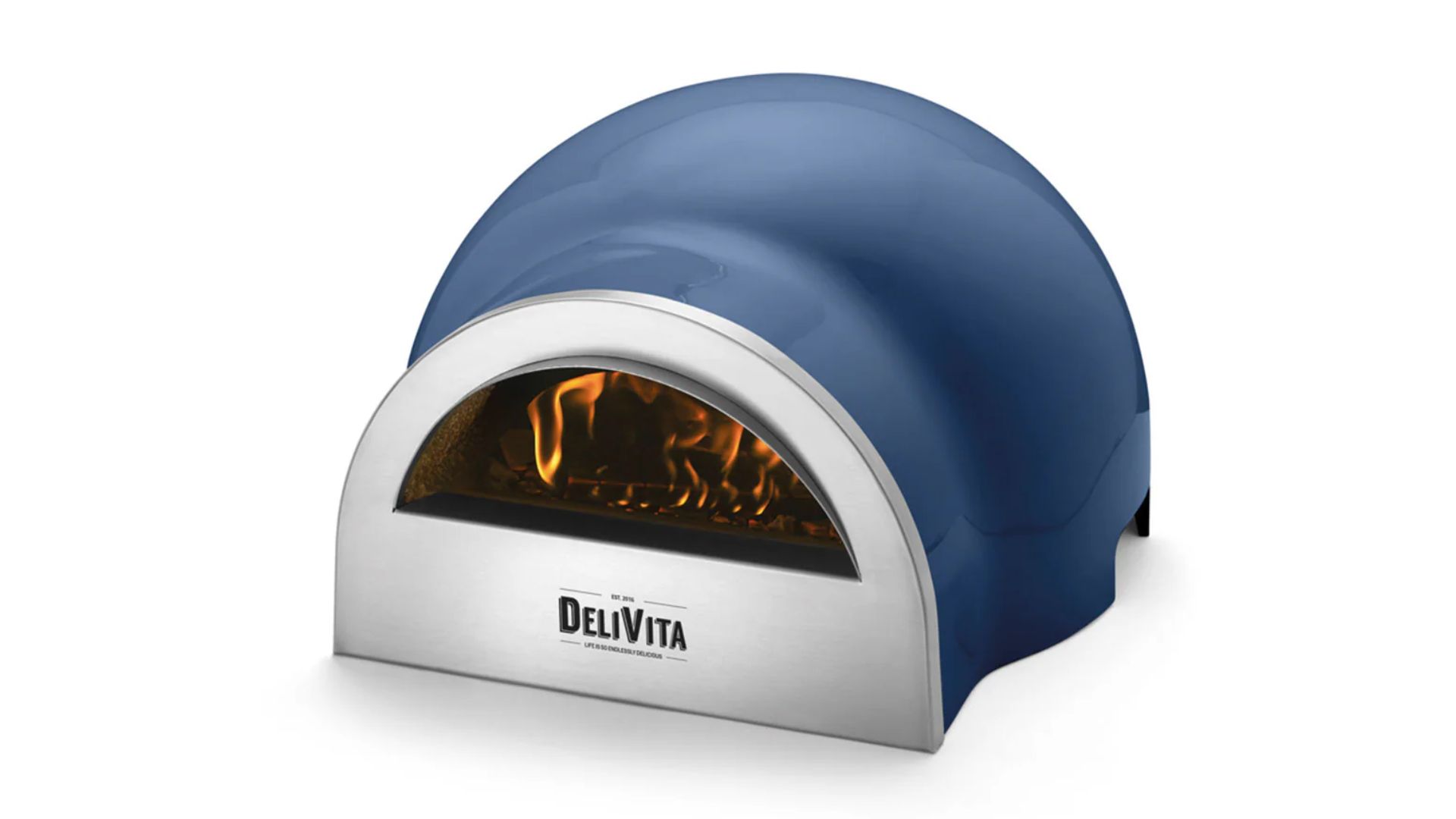
Oven dimensions | 590mm x 650mm x 350mm |
Door size | 540mm x 500mm |
Weight | 30 Kg |
Fuel | Wood |
Temperature range | Up to 550°C |
Colour options | Grey, red, green, orange, black, blue, turquoise, purple |
Warranty | Row 6 - Cell 1 |
Setting up the DeliVita Wood Fired Pizza Oven
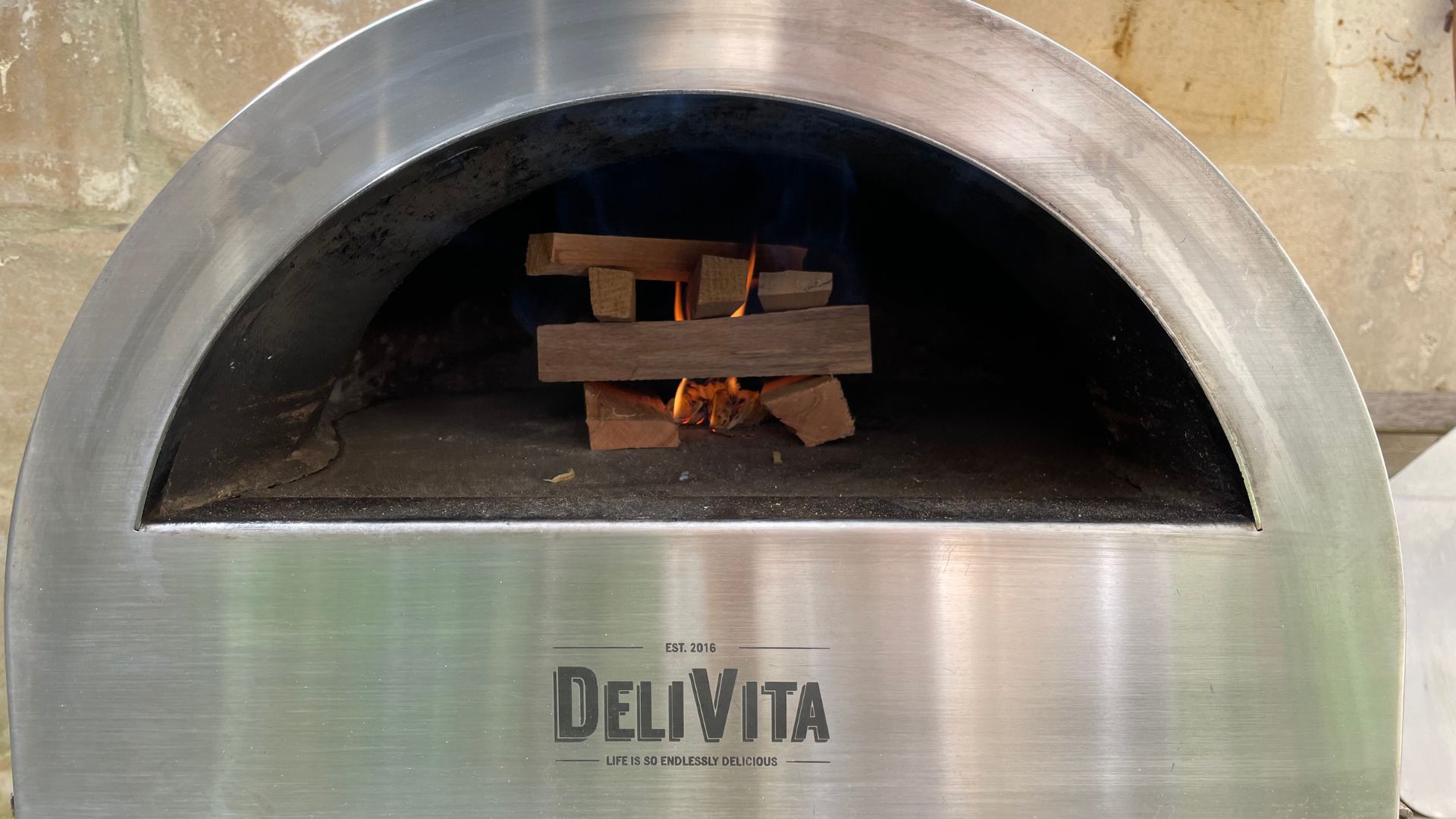
Setting up the DeliVita couldn’t be easier. At 30kgs it has some weight to it, but there are neat places for you to put one hand on each side (if you’re strong) or for one person to hold each side. The oven is heat proofed all over, so you can place it on any surface you need to and it’s also pretty stable, meaning getting set up only requires you to lift up the oven and put it down.
The first time that you use it. I would recommend letting the fire run for an hour or so, because this will burn off any leftover chemicals, dust, and dirt that might be in the oven. You’ll only need to do this once though. After that, your oven will be ready to use whenever you want it.
Who would it suit?
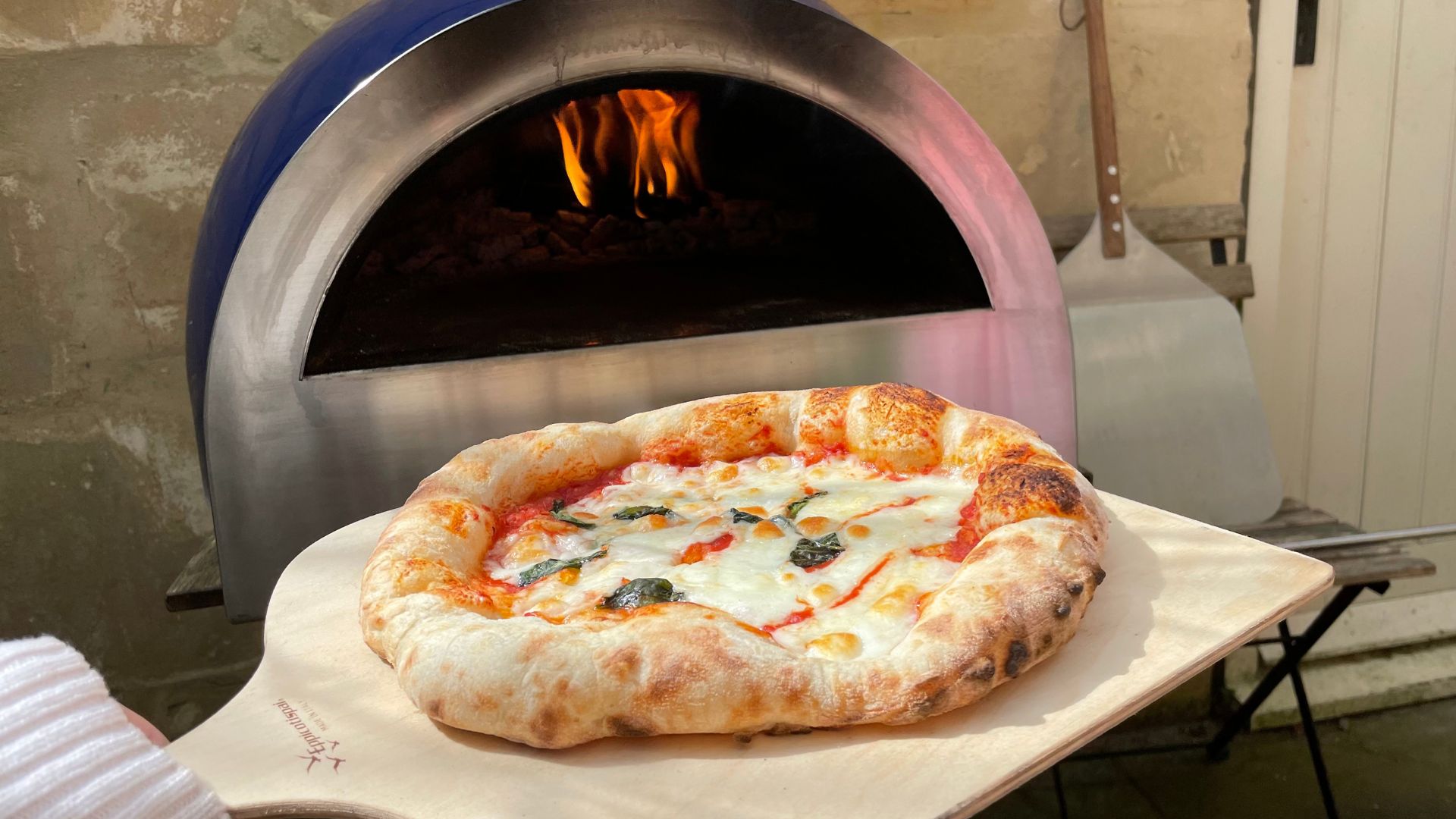
The DeliVita is perfect for families. I have tested the wood-fired option, which gives you an authentic, smoky taste to your food. If you’re good with fires and a confident cook, I have no doubt that you’ll whip up some delicious meals in one of these. And you’ll benefit from wood-fired flavours. If you’re a novice, I’d recommend looking at their more expensive, but also more versatile, dual-fuel oven. This will let you use the flavours of wood-fired cooking, but also gives you the option to switch onto gas, which is easier to control.
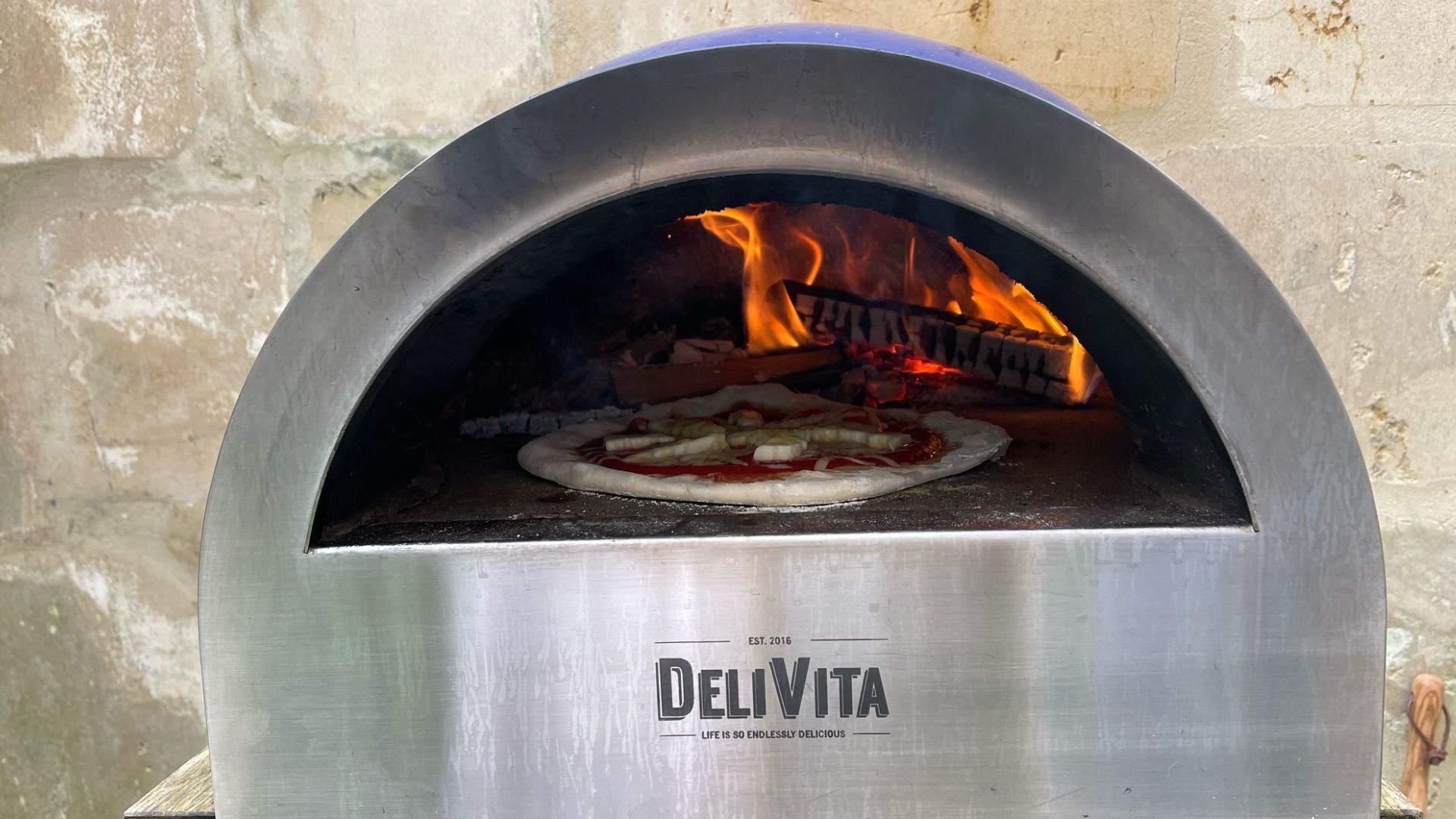
One of the best aspects of the DeliVita is how safe it is to cook with. Most ovens will tell you that you need a heat-proof surface to place your oven on, but Marco confidently sat mine on a rather rickety IKEA patio table. He told me, “we have these and I cook on them fine. This will be more than okay for the pizza oven. It’s only 30kg.” I put my trust in him and it paid off. This was the easiest pizza oven to position and I didn’t need to worry about the top or bottom getting hot, because it’s all well-insulated. If you’ve got kids or you don’t like the idea of having to invest in all the stand paraphernalia, this is the pizza oven for you.
Sign up to our free daily email for the latest royal and entertainment news, interesting opinion, expert advice on styling and beauty trends, and no-nonsense guides to the health and wellness questions you want answered.
True to its heritage, the DeliVita is also a stylish pizza oven. I could sit one of these in just about any garden and make it look good. You’ve got lots of colour options, a timeless, yet characterful design. It’s an easy buy.
What is it like to use?
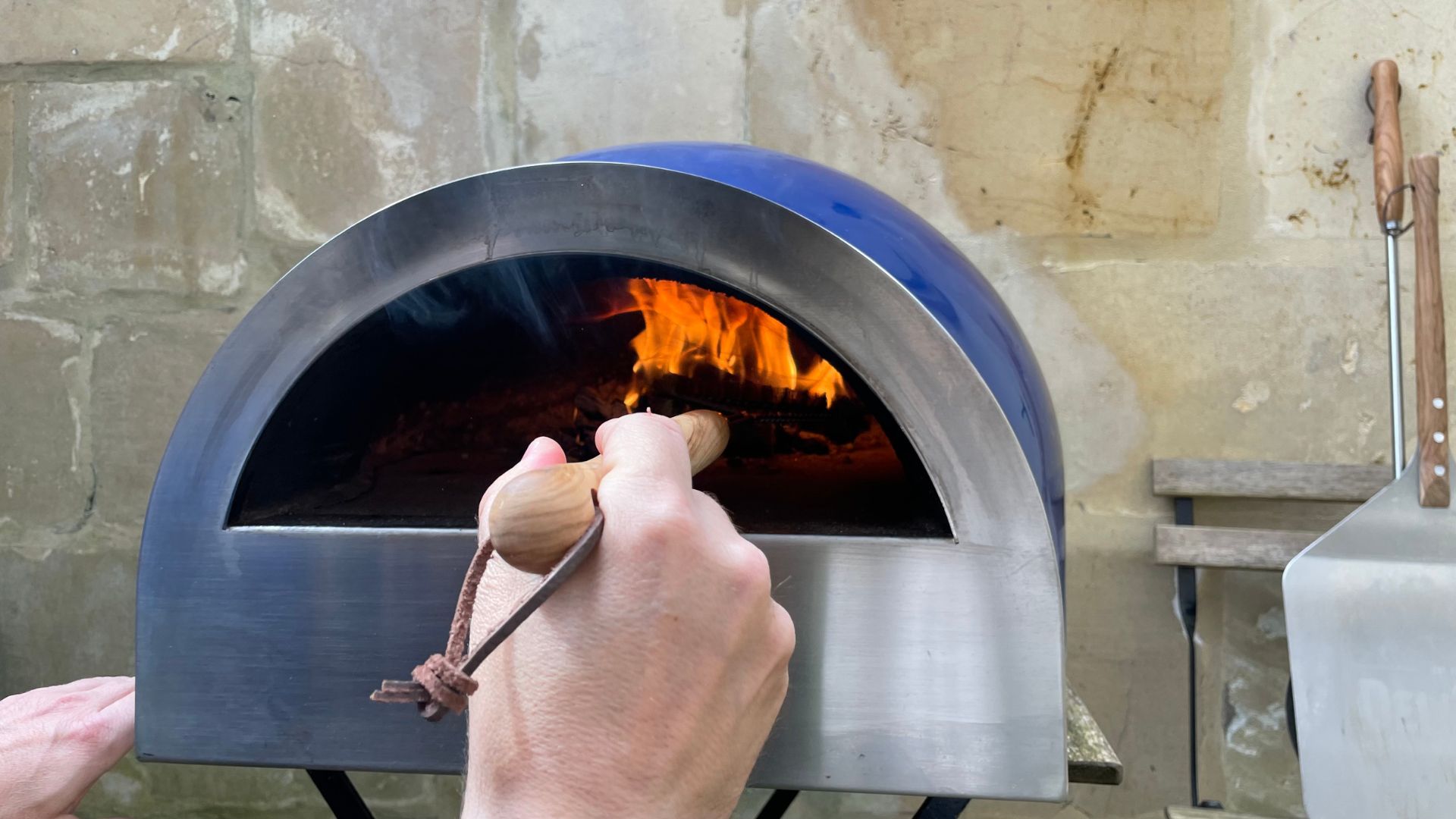
Marco and I are both very comfortable with setting up fires for cooking. “The secret to the perfect fire is three fold,” says Marco, “you need kiln dried wood in small pieces and stack then like a jenga. Throw in two or three flamers and light them. You need space between the pieces for the air to flow and then tend to your fire.” We watched the flames lick around the wood and then burn up down the jenga. After ten minutes, we pushed the jenga stack to the back of the oven and added a couple of logs. We wanted flames that came up inside the roof of the oven and we also wanted to give the fire some time to warm up the whole oven. Marco says that this, on average, takes about half an hour.
You might spot a fair amount of smoke coming from the oven. We always had chimneys on ours, so I was quite surprised initially when we lit the DeliVita. However, Marco reassured me “it smokes for ten minutes and then once we have burned through the wood, it won’t. He was right. The oven calms down and, as you add one log to keep the flames and fire stoked, you might see some smoke stealing its way out of the oven, but it’s not enough to get the neighbours complaining.
Test 1: pizza
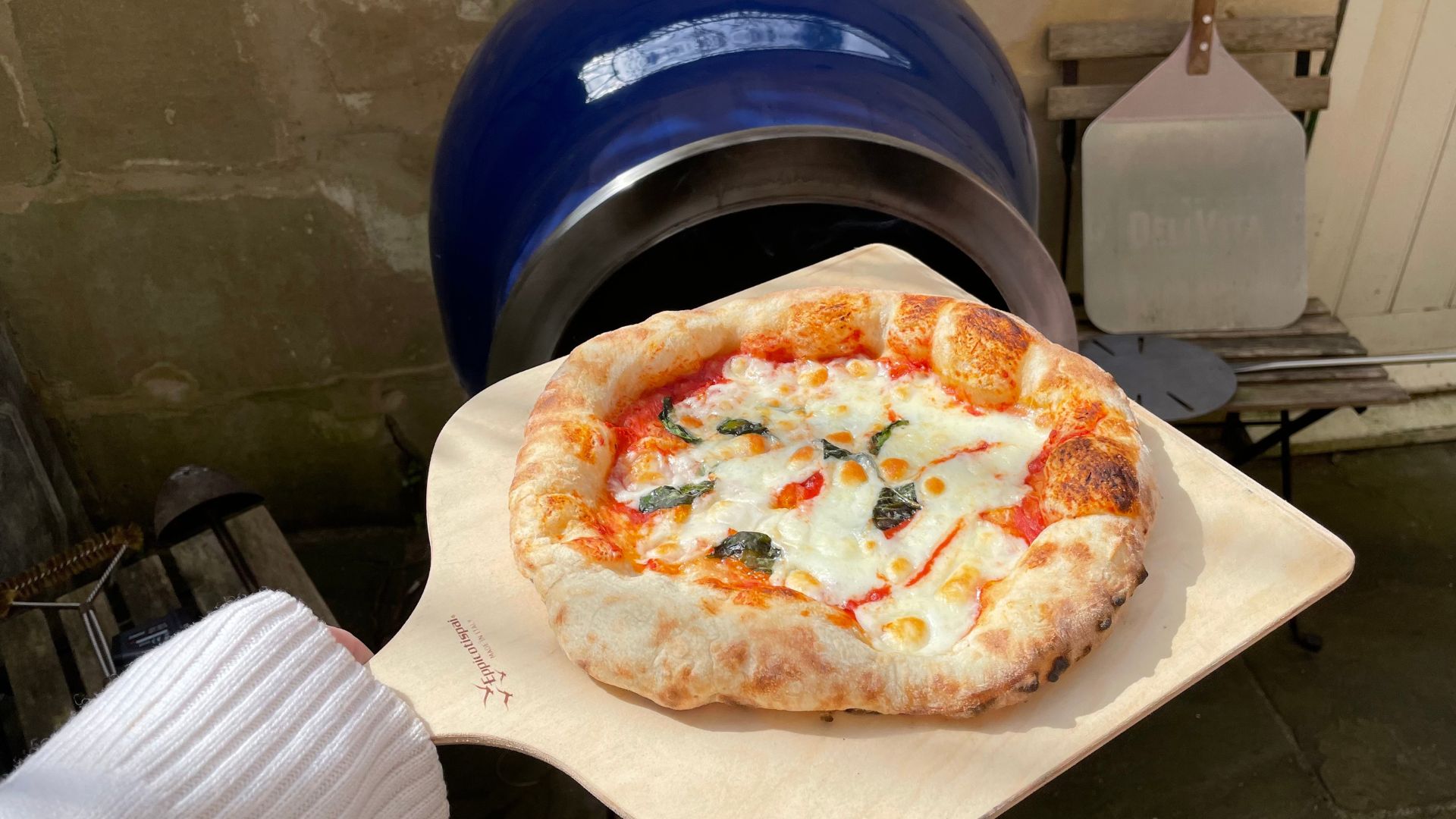
Of course, the classic test for any pizza oven is pizza. A relatively large component of your success lies in your accessories, so I would recommend investing in a paddle and peel. The paddle is likely to be wood and you’ll scatter semolina flour over this. Then, you can roll out a pizza base, sit it on the paddle, and add your toppings. Give it a shake to check that the pizza is moving on the paddle and then you can slide it into the oven.
At this point, you’ll switch over to the peel. You can use this to turn your pizza in the oven and you’ll want to keep an eye on this. My pizza cooked in 60 seconds. The best clue you have for turning the pizza the first time is that the crust will lift itself off the base of the oven. You’ll see it puffing up and then you’ll need to flick and rotate the pizza in the oven with your peel. Making pizzas like this takes skill and you’ll also want to keep an eye on your fire, so that the flames are always going (this just means adding a log or two), but you’ll master the art quickly.
As you can see, this made some pretty delicious pizzas. We had a wonderfully crispy base, light, fluffy, doughy crusts, and all the vegetables were cooked right through. I had nice speckling on the cheese on top and all the base was cooked right through too. It’s impossible to fault.
Test 2: roasted vegetables
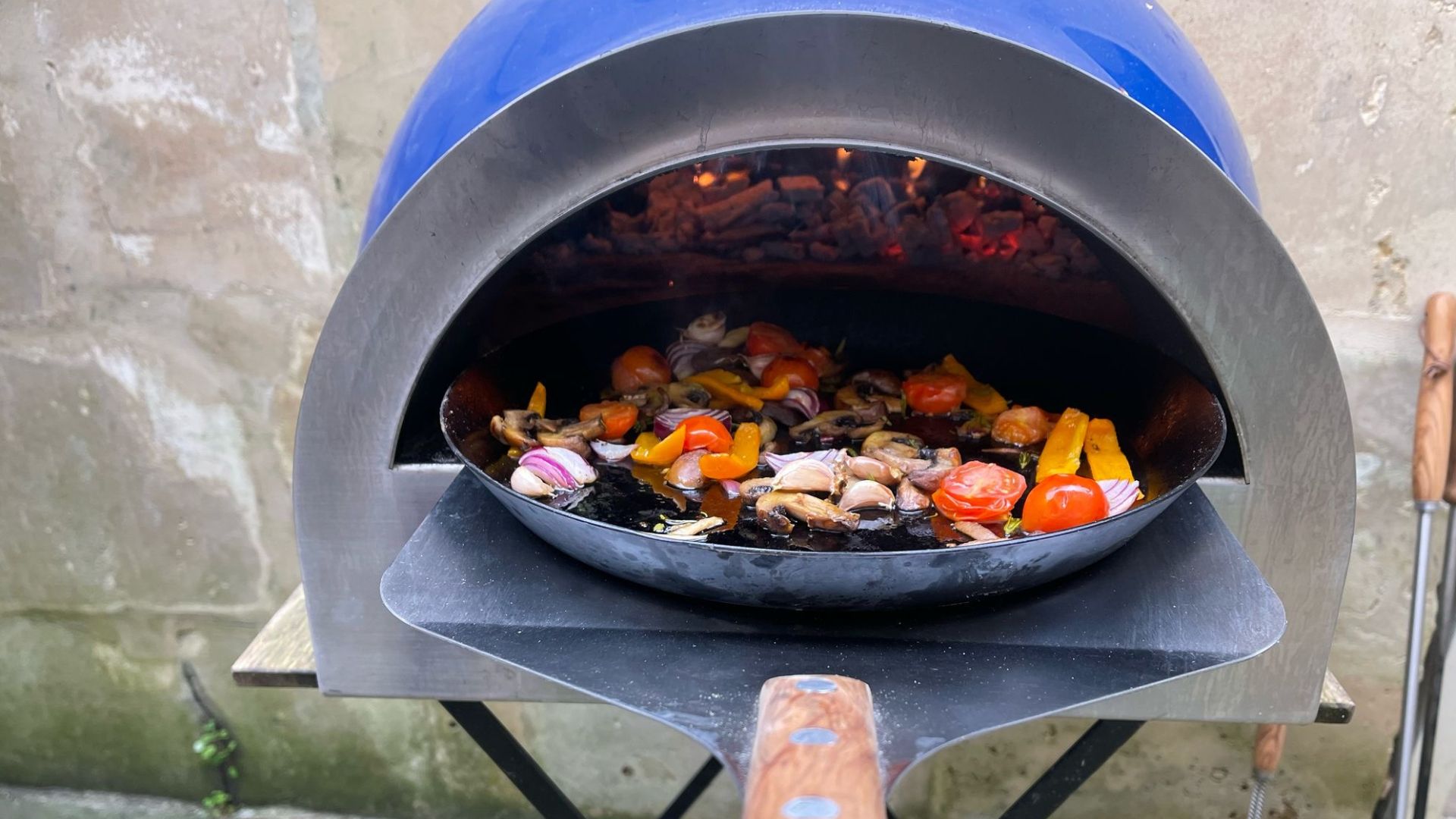
The beauty of ovens like this is that you can use a cast iron skillet to expand the oven’s cooking capacity beyond pizza. Marco told me tales of elaborate slow cooked salmon dishes, tender steak, and roasted joints cooked in his DeliVita. Whilst that’s all mouthwatering stuff, I kept it simple and tested out roasted vegetables.
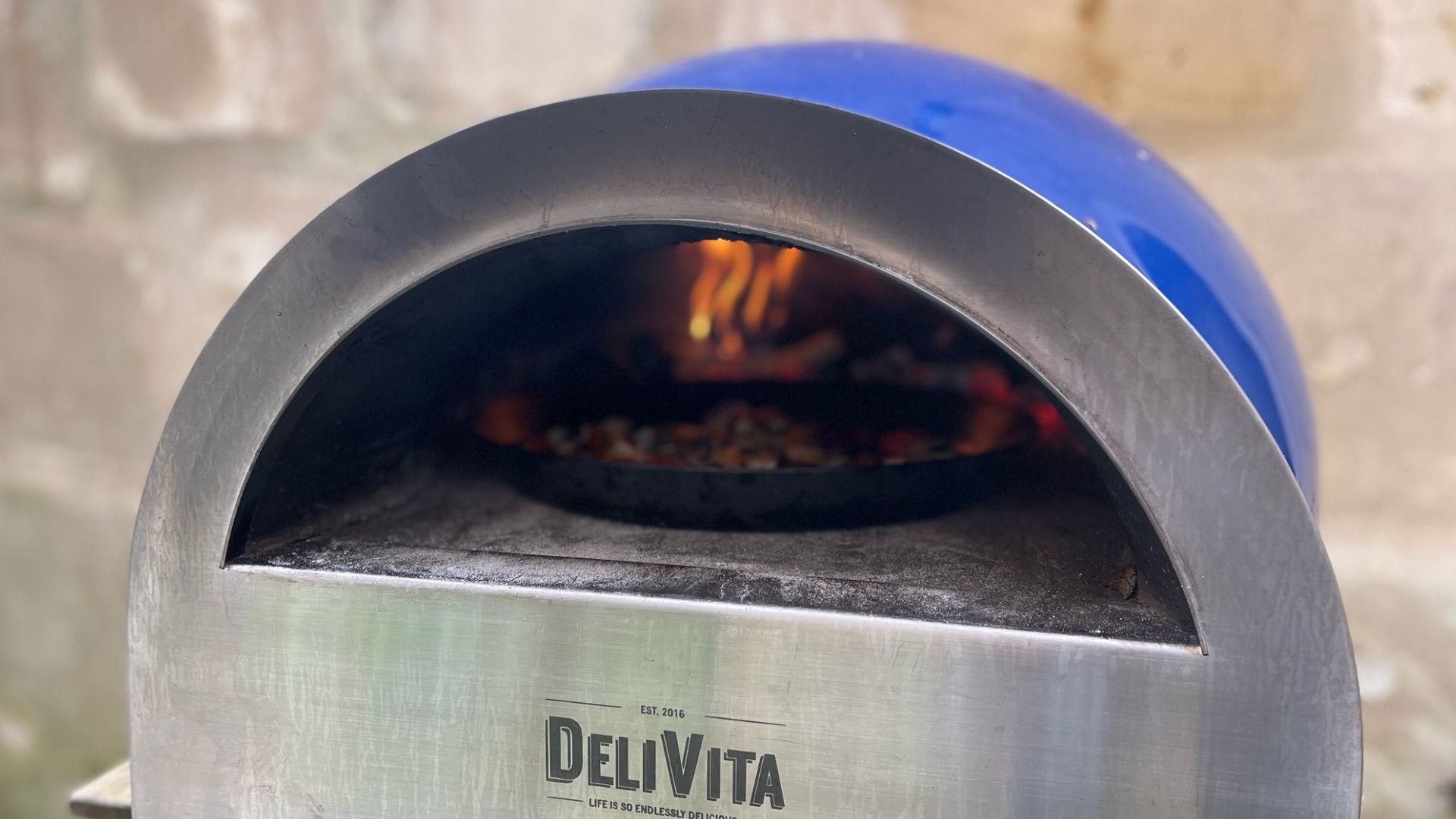
In my skillet, I chopped red onion, pepper, mushroom, courgette, garlic, and then added a drizzle of olive oil. Within five minutes of the skillet sitting in the flames, my vegetables were cooked. They charred and crisped up in all the right places and stayed soft, sweet and tender in the thicker cuts of vegetables. It was a delicious spread that I happily repeated four days in a row before I decided I needed to break the cycle. I loved how easy it was to go from pizza to skillet, so ended up finessing a cast iron vegetable medley, which I then stuffed into a pitta that I lay on the base. It puffed up and tasted soft and delicious.
Test 3: Marco's bruschetta
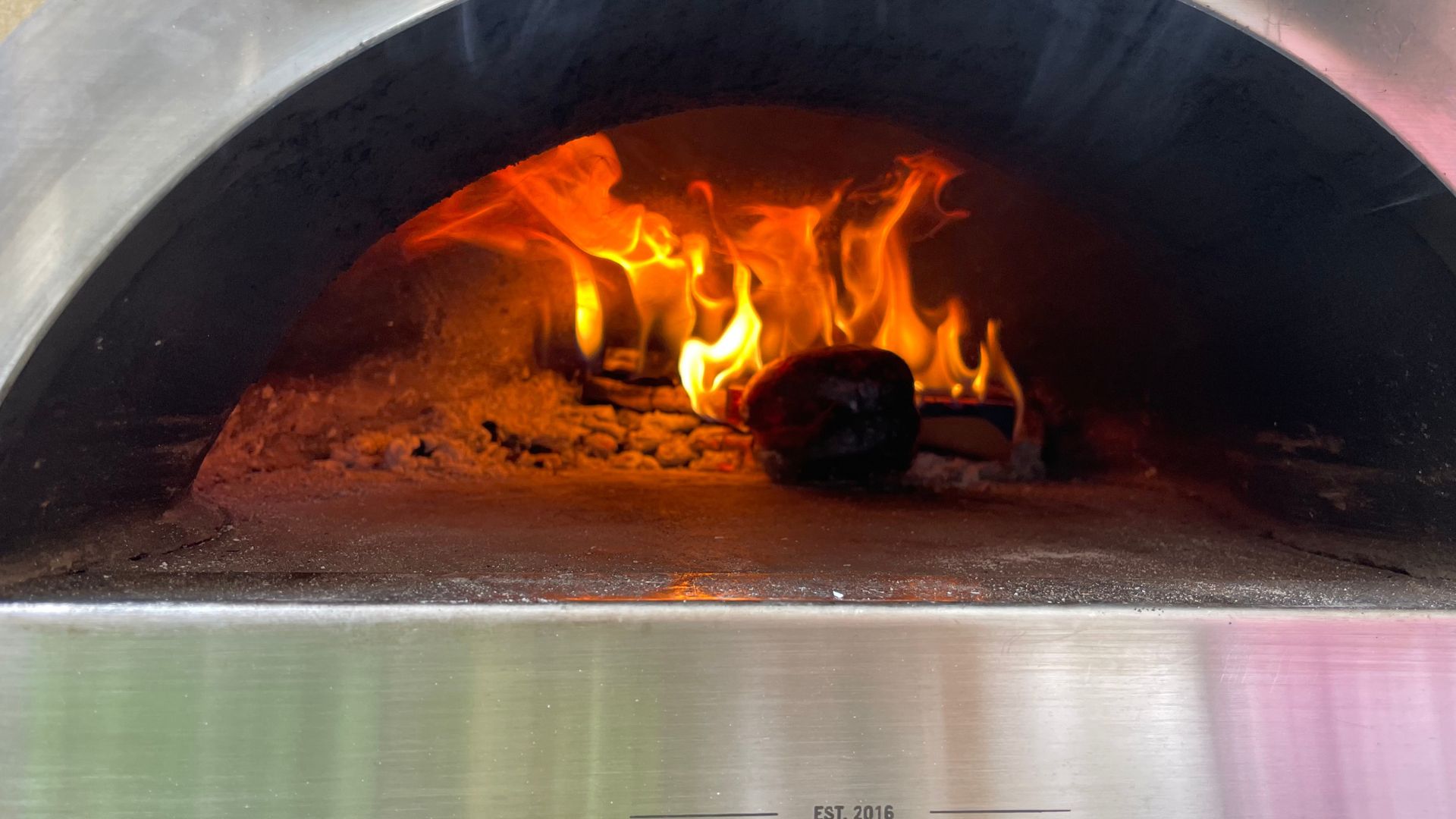
You see that black lump in front of the fire? That's the pepper. You wouldn't think it was edible, but wow. It really is.
Now, this isn’t normally a formal part of my testing process, but Marco told me such a captivating and intriguing story that I just had to test it out. “When I was a young boy,” recalled Marco, “we used to make a special snack. I would throw an onion or a pepper in the flames and let it go black. We would sit it there for ten minutes and then pull it out the fire. Then, we covered it with foil, letting the vegetable sit and steam itself before peeling all the black off the pepper (or onion). Then, we would chop it with capers, parsley, and anchovies, a drizzle of olive oil, and some salt.”
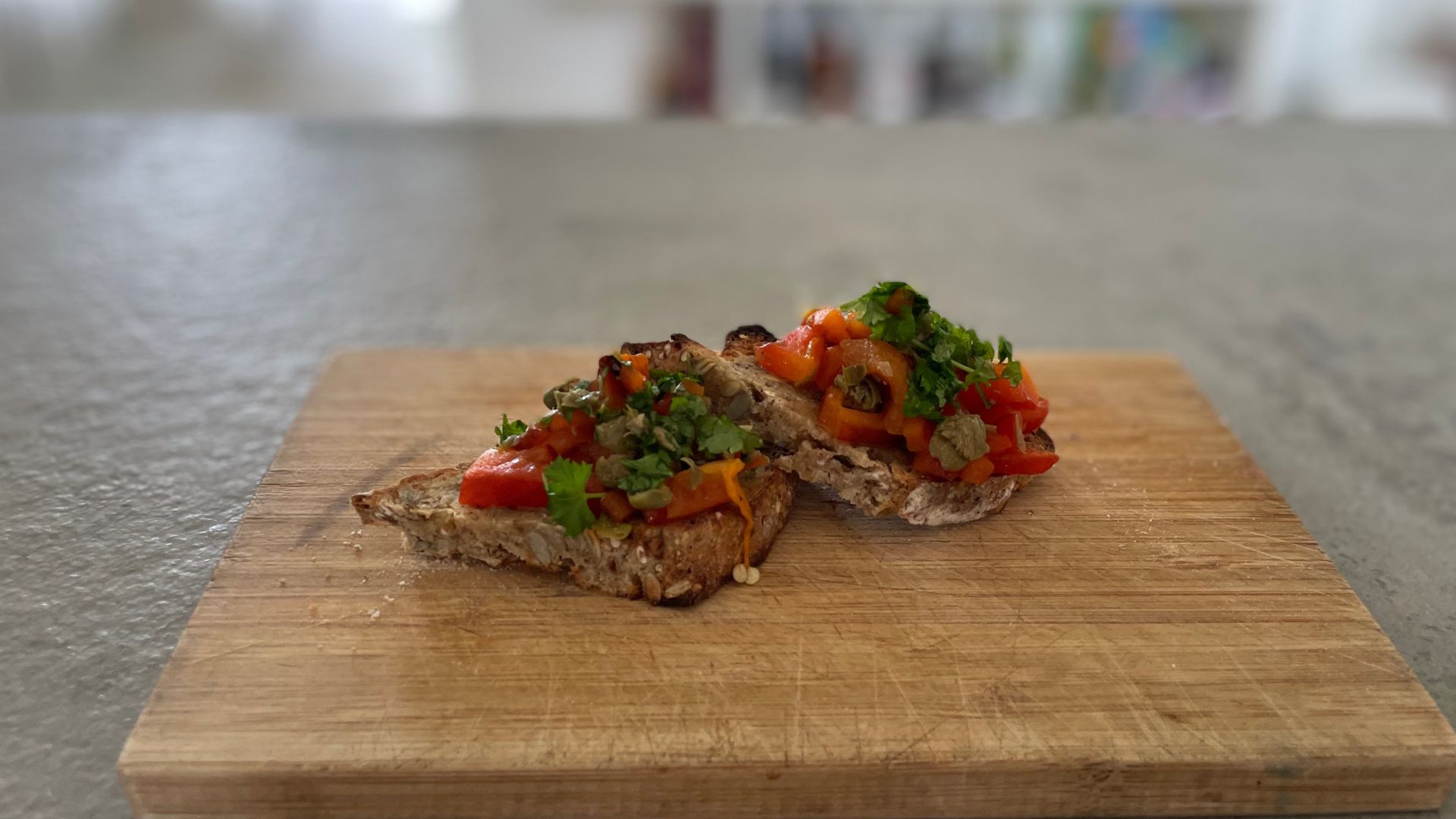
It sounds delicious (and a little bit mad), so I had to try it. The first time I made this was with Marco and when he pulled the blackened pepper out of the flames, I didn’t believe that it was edible. However, sure enough, he peeled the black off and underneath there was tender sweet red pepper. He sliced it up, added the capers and parsley, and then we toasted some bread on the base of the oven. The resulting snack was delicious.
As soon as Marco left, I made exactly the same thing. And then I did the same with another pepper. And then with another pepper. And then with an onion. It is now a staple in my diet and I’m not quite sure what’s going to replace it when I have to hand the oven back to Marco. It’s impossible to get that sweet, tenderness with the smoky centre in any other cooking method. I might just have to buy a DeliVita to replicate it.
Cleaning
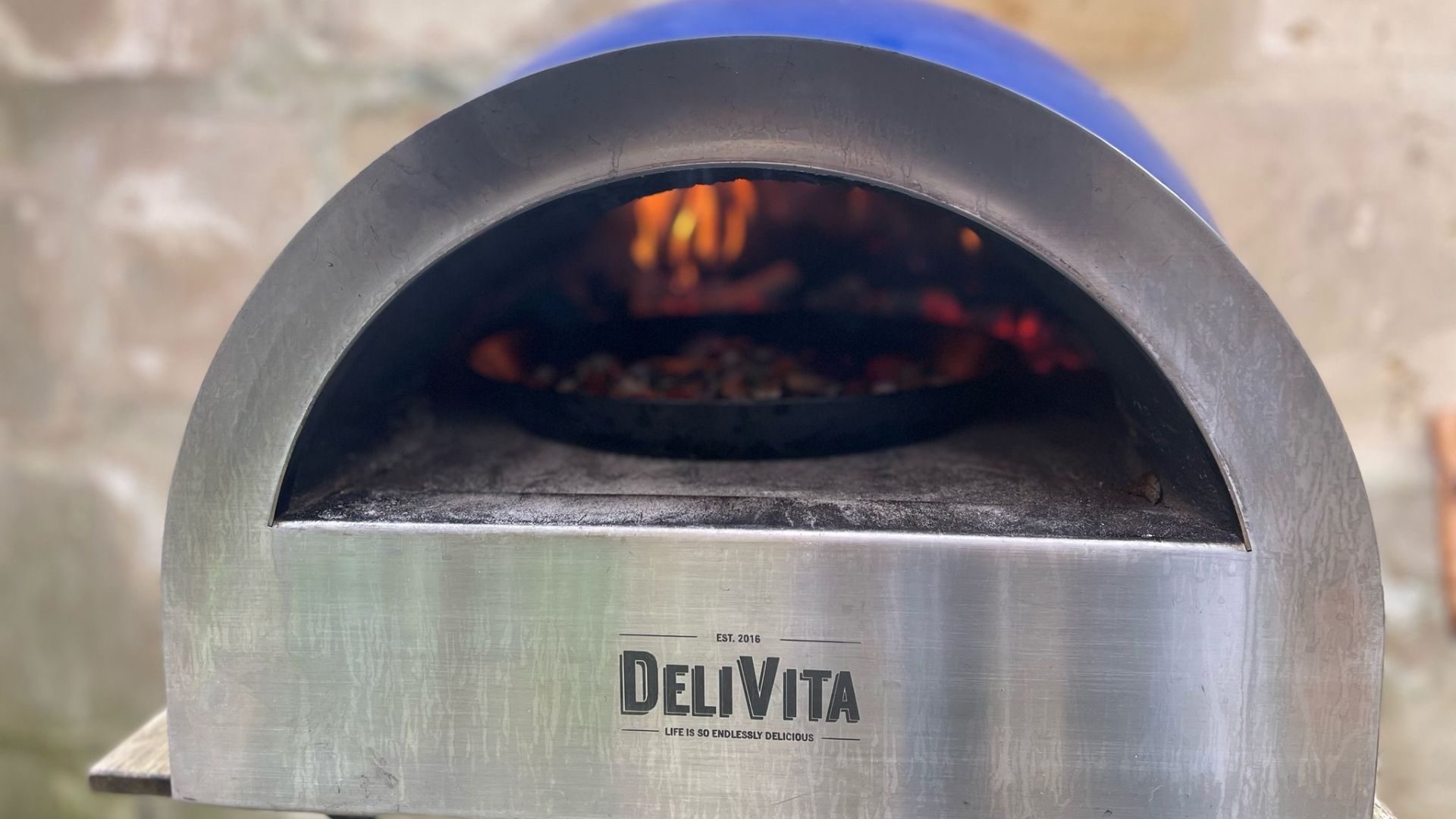
The base of your oven will always get some wear and tear. It’s best not to try and fight it. The scrapes, flour, and blackening are all battle wounds that you should show off with pride: you are a proper pizza maker if your oven looks like this. I’d recommend buying a brush to sweep up any burnt flour from the base and a shovel to take out any ash that might build up. Wait for the fire to cool down before you do any of the ash emptying.
You’ll also spot in these pictures that the mouth of the oven gets progressively blacker and blacker. This is from the soot and you don’t really need to worry about it. I like to wipe mine down so that it’s sparkling, but some people let the soot build up, again as a marker or pride. Just make sure to be careful with your clothes around it.
How does it compare?
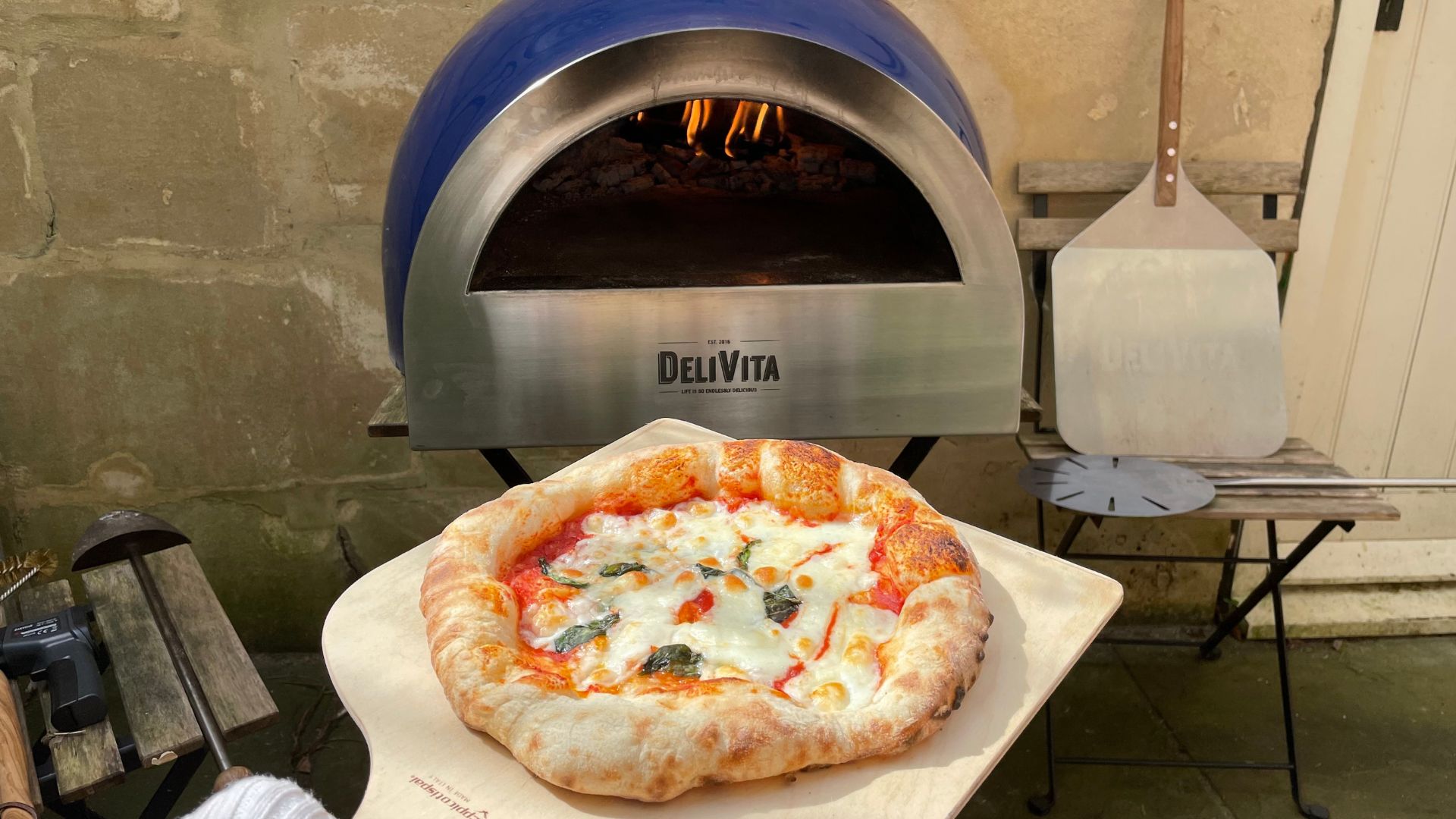
Before testing the DeliVita, I was apprehensive about any oven coming close to Gozney’s cooking quality. The Arc is an amazing gas-powered oven that makes authentic, professional pizzas. It’s very smart, sleek, and easy to use. The build quality is good and you get all the same heat-proof benefits on offer from the DeliVita. There really isn’t much between them, which is saying something because Gozney dominate the industry for luxury pizza ovens.
If you like the sound of all that, but you’re on a budget that can’t stretch to either Gozney or DeliVita, you do have some options. Jamie Oliver has collaborated with Tefal to make a gas-powered pizza oven that has a handy rotating wheel in the base. It’s gas powered too, which means that you have easy temperature and cooking control. It’s perfect for novices, but you do compromise on the experience. This needs to be sat on a heat-proof surface and you don’t get the same flavours as the DeliVita or the name nuanced control as the Gonzey. It has the basics nailed, but will leave professionals wanting a little.
Should you buy it?

If you want a stylish, authentically Italian pizza oven, the DeliVita is perfect. The wood fired flavours are second-to-none and it’s really easy to make a delicious pizza in. I thought that the Gozney couldn’t be beaten. However, from an authenticity perspective, I think the DeliVita takes the biscuit. Or should I say pizza?
How we test
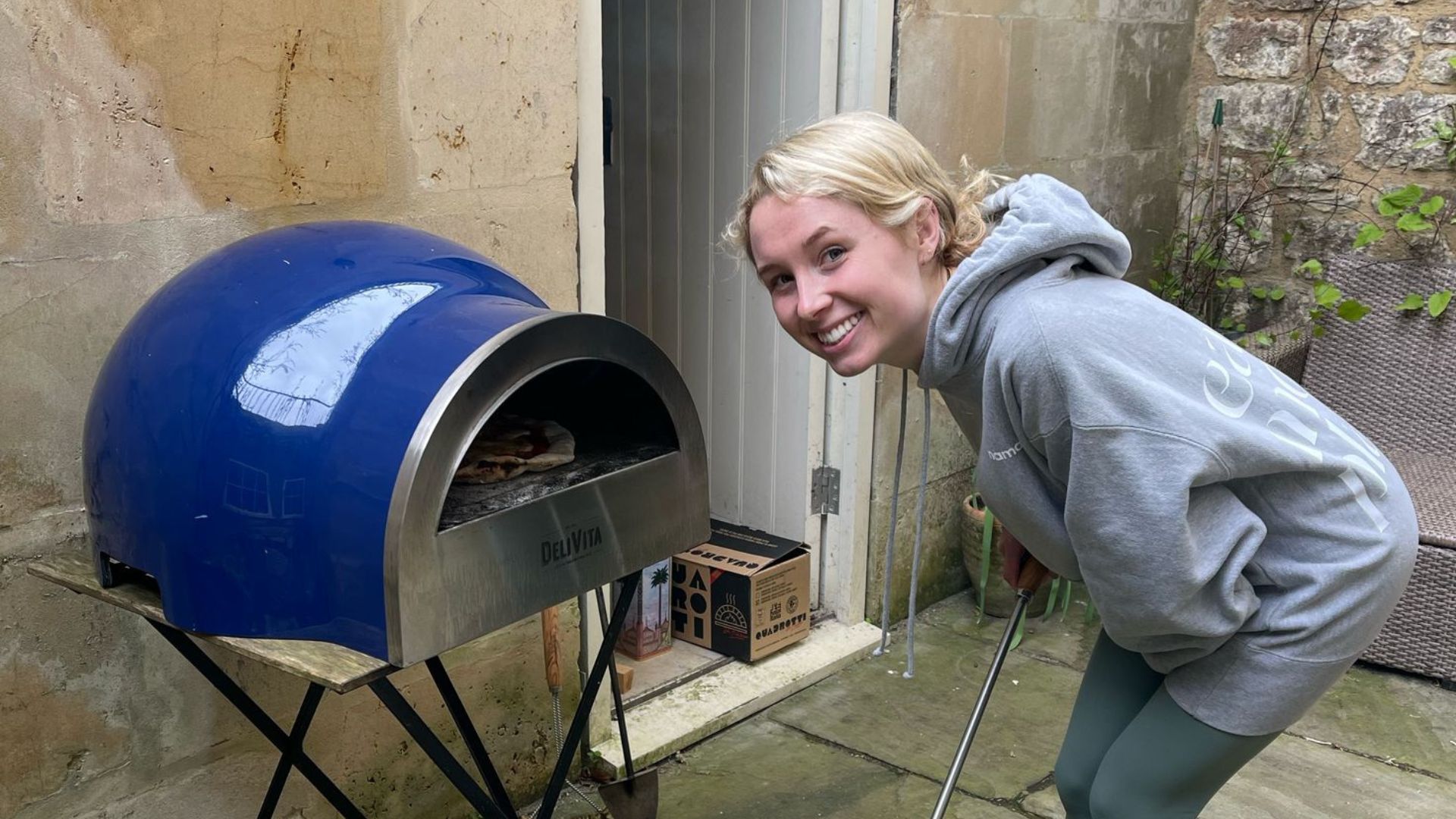
I’ve been heading up our pizza tests at woman&home, because, from the age of 13, my life was essentially pizza. My family runs a pizza business and in my lifetime, I know I’ve made at least 250,000 pizzas. If that’s not enough to teach you what a good pizza oven is like, I don’t know what is.
I’ve been cooking on Gozney ovens for most of my commercial experience, but we’ve also tested and used plenty of domestic pizza ovens in our family home whilst we have been searching for the secret to making the perfect pizza. The tests have expanded into our pizza oven series at woman&home and I write up the reviews that you see here. So, if you can't already tell, we mean business.
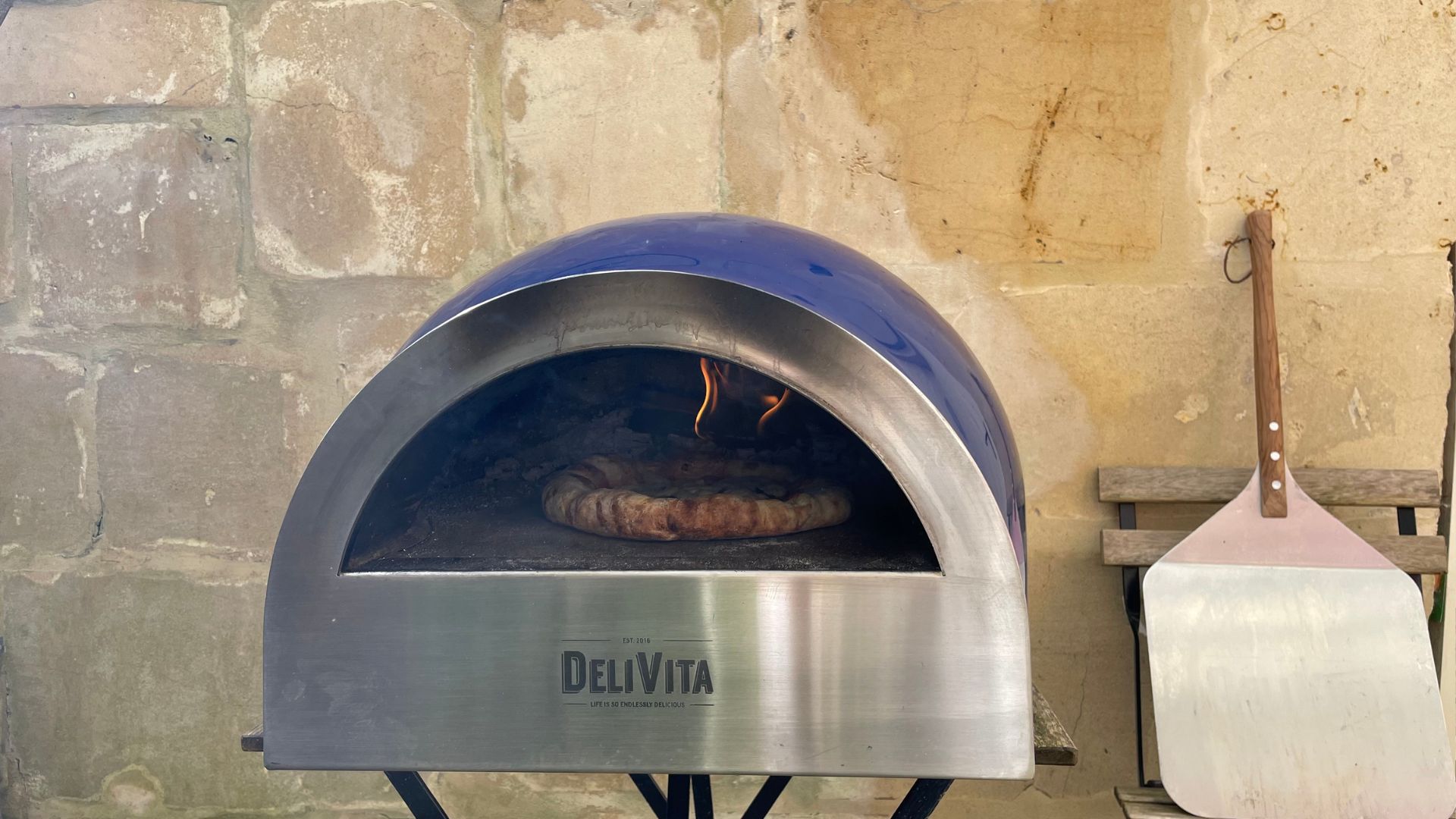
I like to cover the whole pizza oven experience in my review, so I'll talk you through what the pizza oven is like to set up and where you can put it. Then, I'll run tests - cooking pizza, roasted vegetables, nachos, cookies, and much more - to test a range of different aspects of the pizza oven. I want it to cook evenly on the base, be able to do low and slow, but also fast and intense. We want quick, even results that are easy to control, which is surprisingly difficult to achieve perfectly, as you will see in my reviews.
I'll also talk about cleaning, maintenance, and I'll compare your pizza oven to others on the market, so that you get a good sense of having shopped around. I aim to leave no stone left unturned, so that you feel like you've been cooking and eating every last crust of pizza alongside me. However, if you have any burning questions, please email me. I'm always happy to talk about all things pizza.

Laura is woman&home's eCommerce editor, in charge of testing, reviewing and creating buying guides for the Homes section, so you'll usually see her testing everything from the best dehumidifiers to sizing up the latest Le Cruset pot. Previously, she was eCommerce editor at Homes & Gardens magazine, where she specialised in covering coffee and product content, looking for pieces tailored for timelessness. The secret to her heart is both simplicity and quality. She is also a qualified Master Perfumer and holds an English degree from Oxford University. Her first editorial job was as Fashion writer for The White Company.